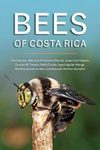By
Keith
19 Jul 2019
Written for Paperback
This is the second volume in a planned series of five that will cover the whole of Brazil. The first part appeared in 2010 and covered the Pantanal and Cerrado of Central Brazil, and given the gap of six years people were beginning to wonder if the project had failed, but I am pleased it has not, although it is not clear how long we will have to wait for the remaining volumes. This second book covers 927 bird species that occur in just the southeastern Atlantic Forest area which is a real birding hotspot with 140 endemic and 105 near-endemic species.
There are now several good field guides to Brazil, and although it has some shortcomings many people have been using
A Field Guide to the Birds of Brazil by Ber van Perlo published by Oxford University Press in 2009. That book covers over 1800 species, so to have more focussed field guides to regions of the country makes a lot of sense, and allows for longer descriptions of each species. Despite that, only 863 of the 927 species are illustrated, with some simply mentioned and not given a map. In a few cases (such as São Paulo Marsh Antwren
Formicivora paludicola and Caatinga Antshrike
Thamnophilus capistratus) these are relatively new discoveries, although not so new that there is no reference material to illustrate from. Also, it simply does not make sense to ignore species like Planalto Slaty Antshrike
Thamnophilus pelzelni just because it looks almost identical to another species with a different range. I imagine that the main problem lies in the fact that many of the illustrations by Guy Tudor have been taken directly from his work for
Birds of South America – Passerines published by Helm in 2009 and that these species were not included at that time. A team of additional artists was drafted in to paint the non-passerines.
The introductory pages give an overview to the region with information about the best areas and times to visit. The taxonomy used follows IOC in most cases although the authors have made a few adjustments where they do not agree with the IOC decisions. Each species is described in around 140 words and the plates are on the opposite (right-hand) page. This allows for around five species per double-spread which is excellent. A colour distribution map for most species is included. Sadly, the text for Golden-spangled Piculet
Picumnus exilis has completely vanished and although it is illustrated and has a map, the text for White-wedged Piculet
Picumnus albosquamatus has accidentally been repeated instead.
Given that it is the world’s fifth-largest country with a checklist now exceeding 1900 species, the solution of regional field guides is clearly the right one. Let’s hope that the next three volumes will follow fairly quickly.














![Wildlife Conservation Society Aves do Brasil, Volume 2: Mata Atlântica do Sudeste [Wildlife Conservation Society Birds of Brazil, Volume 2: The Atlantic Forest of Southeast Brazil, including São Paulo and Rio de Janeiro] Wildlife Conservation Society Aves do Brasil, Volume 2: Mata Atlântica do Sudeste [Wildlife Conservation Society Birds of Brazil, Volume 2: The Atlantic Forest of Southeast Brazil, including São Paulo and Rio de Janeiro]](http://mediacdn.nhbs.com/jackets/jackets_resizer/22/227183.jpg)





![Wildlife Conservation Society Aves do Brasil, Volume 1: Pantanal & Cerrado [Wildlife Conservation Society Birds of Brazil, Volume 1: The Pantanal and Cerrado of Central Brazil]](http://mediacdn.nhbs.com/jackets/jackets_resizer_medium/23/238781.jpg?height=150&width=91)























